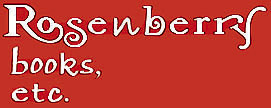“… serious contributions like … David Rosen’s The Tao of Elvis …”
Elvis Presley’s death on August 16, 1977, was closely followed by the deaths of two other seminal figures in twentieth-century entertainment. Bing Crosby died in Spain on October 14, 1977, while Groucho Marx passed away quietly in a Los Angeles hospital on August 19, 1977 — only three days after Elvis’’s death. Groucho was eighty-six, Bing was seventy-four, and Elvis was forty-two years old.
Since then, through depictions in popular culture and ephemera, only Elvis maintains an almost-palpable presence.
The world first became fascinated with Elvis through his music and his movies. The post-Elvis enchantment initially manifested itself in the form of sympathetic and not-so-sympathetic biographies.
Since 1977 the canon of printed literature invoking the name of Elvis has grown, including serious contributions like Erika Doss’s Elvis Culture and David Rosen’s The Tao of Elvis, as well as a surfeit of non-academic books like Brenda Butler’s Are You Hungry Tonight?.
Biographical films about Elvis appeared as early as 1979. Later films, such as the haunting Mystery Train and the conspiratorial Bubbahotep, feature dark and fantastic portrayals of Elvis.
The world of visual art has also become a repository for images of Elvis — tributary, allegorical, and satirical. Today, Elvis is the subject of works —in every form and medium possible — by artists from all over the world. His face is no longer the face of the man who sang, danced, and played the good guy on the silver screen; rather, it is the face of an icon whose character echoes the views and passions of the artists who portray him.
Elvis, it seems, is here to stay.
National Portrait Gallery exhibit 1/8/10 to 10/29/10



